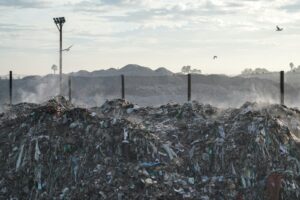Town hall chiefs and campaigners call for air quality action
Campaigners have warned that a new report by the World Health Organisation (WHO) into air pollution may not reflect the true gravity of the situation.
The report examined the levels of small and fine particle matter (PM10 and PM2.5) between 2008 and 2013 in a total of 795 cities across the world.
According to the international organisation, the 10 cities in the UK did not meet their air quality quidelines for PM10 are Port Talbot, Stanford–le-Hope, Glasgow, Leeds, London, Scunthorpe, Eastbourne, Nottingham, Oxford and Southampton. A total of 41 towns and cities exceeded PM2.5 levels.
The publication of the report has prompted fresh calls from environment campaigners for the government to take the issue of air quality seriously.
‘That a town like Eastbourne, located at the edge of the beautiful South Downs National Park, is the third worst in the UK for PM 2.5s and seventh worst for the larger PM10 air pollutants, is a stark reminder of just how widespread this problem is,’ said Green Party MEP, Keith Taylor.
The Friends of the Earth air pollution campaigner, Jenny Bates, said there now needs to be a clean air zone in every city and large town. ‘Politicians must urgently introduce a diesel scrappage scheme to get the worst polluting vehicles off our roads, as well as more investment in alternatives to driving,’ added Ms Bates.
‘We need the government to wake up to our air pollution crisis’ – James Thornton, chief executive of ClientEarth
The environmental law group ClientEarth warned the air pollution situation could be even worse than the WHO figures suggest. The group claim the data used in the report is often taken from different types of location; some measure pollution in the background, whereas others gather data directly by the roadside. And the WHO figures do not include nitrogen dioxide, which is the basis of ClientEarth’s legal battle with the UK government.
‘We need the government to wake up to our air pollution crisis,’ said ClientEarth’s chief executive, James Thornton. ‘The only time it has shown resolve in this area is when it has decided to fight us in the courts when we’ve challenged them over the illegal levels of air pollution in this country.’
The government is planning to install clean air zones in five cities by 2020 – Birmingham, Leeds, Nottingham, Derby and Southampton. But earlier this month, the House of Commons’ environment, food and rural affairs committee said the government should extend its current plans and let local authorities across the country create their own zones. Committee chair Neil Parish said more councils should be given the option of setting up their own clean air zone and be given the flexibility of being able to locally target certain times of the day or routes.
And all eyes will also be on the new London mayor, Sadiq Khan, to see what he can do to tackle the issue of air quality in the capital.
‘While the boroughs have been working hard to minimise the impact of pollution, they cannot tackle the issue alone,’ said the chair of London Councils’ transport and environment committee, Cllr Julian Bell. ‘Improving air quality requires a collaborative effort and we look forward to working with the mayor to bring about a healthier future for London.’











